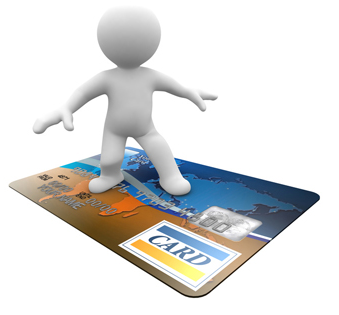Controversial Financial Products.
Every few years a new financial product hits the marketplace and causes a stir between all parties. Credit cards are an accepted addition to modern life now, and it’s not unusual to see a wallet with two or three of them bursting out of the card holder but when they were first introduced and for some time after there was still controversy surrounding its release. The arguments for the use of credit cards were essentially that they allowed people to make purchases and repay the money in the future. The arguments against credit cards were that the interest rates were too high and they would encourage people to get into debt.
The Close Scrutiny Of Credit Cards.
It is not long since payday loans were first introduced and they came under almost identical scrutiny to credit cards. There is no avoiding the fact that the rates are comparatively high, even when compared to those of the credit card, but so do the people who use them as well. Strictly speaking, the charges associated with these two forms of credit are different but fundamentally they can be easily compared to one another.
How Much Does A Payday Loan Cost?
While credit cards attract an annual interest rate of approximately 12%, you are looking at rates a lot higher with payday loans. These rates vary from $10 to $20 for every $100 you borrow usually over a period of two weeks. You are also offered the opportunity to roll the loan over for another period. Of course, you will be charged the same rate as for your initial loan and by rolling a payday loan over too often you will very soon be paying huge rates. Consider that you borrow $1000 and roll the repayment over 5 times. This is not unusual and it means that even at the lowest rate of $10 for every $100 you will have paid a staggering $500 and you will still owe the initial $1000. That’s the equivalent of a 200% APR.
The Questions Raised Over The Legitimacy Of Payday Loans.
Already there is a lot of question over the legitimacy of these loans and regular questions are raised against the ethical question of loan companies offering loans with this kind of charge. Many people who have used them want them stopped because the companies that offer payday loans quite obviously gear their campaign towards the continuing need to roll over the repayment. The companies in question are unlikely to make money from customers who use them legitimately and instead of offering the opportunity to extend the loan as a last resort some companies not only offer the opportunity as a matter of course, but they actually set the extension as default. This means that unless you contact them to inform them you wish to make full payment your loan will extend for another term.
A Solution That Causes More Problems Than It Solves?
Because there are no credit checks required before your are accepted for a loan it is very easy for those who are already in financial difficulty to dig themselves deeper and deeper into a solution that causes more problems than it solves. However, the counter argument is still a fairly strong one. No other financial service is the same as the payday loan, it truly is unique and if you have a short term need for money then the speed and ease in which a payday loan can be arranged is unsurpassed.
The Possible Advantages Of The Payday Loan.
By looking around you are able to borrow as much as $1500 until the date of your next payday and most companies offer the application service entirely online. The application process is one that will take no longer than ten minutes to complete and your application will usually be accepted within an hour. The money itself will be transferred automatically into the bank account you outline in your application and this is the same bank account that your repayment will be taken from on the date of your next payday. If you do have a short term need for financial assistance then the payday loan could be the answer to your problems, but you have been warned; it will cost you a lot of money to keep rolling the loan over.
Every few years a new financial product hits the marketplace and causes a stir between all parties. Credit cards are an accepted addition to modern life now, and it’s not unusual to see a wallet with two or three of them bursting out of the card holder but when they were first introduced and for some time after there was still controversy surrounding its release. The arguments for the use of credit cards were essentially that they allowed people to make purchases and repay the money in the future. The arguments against credit cards were that the interest rates were too high and they would encourage people to get into debt.
The Close Scrutiny Of Credit Cards.
It is not long since payday loans were first introduced and they came under almost identical scrutiny to credit cards. There is no avoiding the fact that the rates are comparatively high, even when compared to those of the credit card, but so do the people who use them as well. Strictly speaking, the charges associated with these two forms of credit are different but fundamentally they can be easily compared to one another.
How Much Does A Payday Loan Cost?
While credit cards attract an annual interest rate of approximately 12%, you are looking at rates a lot higher with payday loans. These rates vary from $10 to $20 for every $100 you borrow usually over a period of two weeks. You are also offered the opportunity to roll the loan over for another period. Of course, you will be charged the same rate as for your initial loan and by rolling a payday loan over too often you will very soon be paying huge rates. Consider that you borrow $1000 and roll the repayment over 5 times. This is not unusual and it means that even at the lowest rate of $10 for every $100 you will have paid a staggering $500 and you will still owe the initial $1000. That’s the equivalent of a 200% APR.
The Questions Raised Over The Legitimacy Of Payday Loans.
Already there is a lot of question over the legitimacy of these loans and regular questions are raised against the ethical question of loan companies offering loans with this kind of charge. Many people who have used them want them stopped because the companies that offer payday loans quite obviously gear their campaign towards the continuing need to roll over the repayment. The companies in question are unlikely to make money from customers who use them legitimately and instead of offering the opportunity to extend the loan as a last resort some companies not only offer the opportunity as a matter of course, but they actually set the extension as default. This means that unless you contact them to inform them you wish to make full payment your loan will extend for another term.
A Solution That Causes More Problems Than It Solves?
Because there are no credit checks required before your are accepted for a loan it is very easy for those who are already in financial difficulty to dig themselves deeper and deeper into a solution that causes more problems than it solves. However, the counter argument is still a fairly strong one. No other financial service is the same as the payday loan, it truly is unique and if you have a short term need for money then the speed and ease in which a payday loan can be arranged is unsurpassed.
The Possible Advantages Of The Payday Loan.
By looking around you are able to borrow as much as $1500 until the date of your next payday and most companies offer the application service entirely online. The application process is one that will take no longer than ten minutes to complete and your application will usually be accepted within an hour. The money itself will be transferred automatically into the bank account you outline in your application and this is the same bank account that your repayment will be taken from on the date of your next payday. If you do have a short term need for financial assistance then the payday loan could be the answer to your problems, but you have been warned; it will cost you a lot of money to keep rolling the loan over.




















